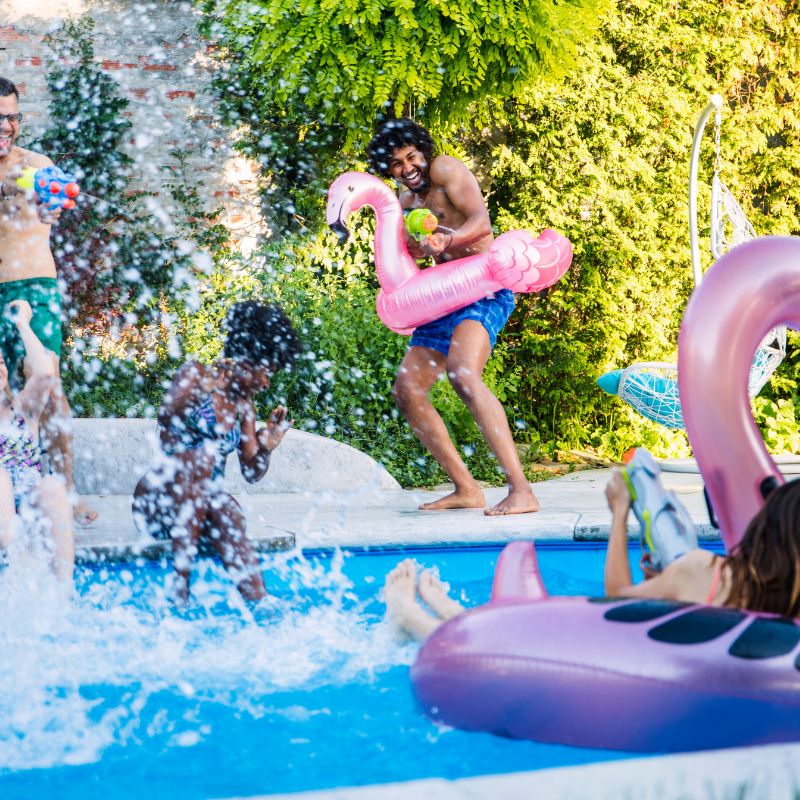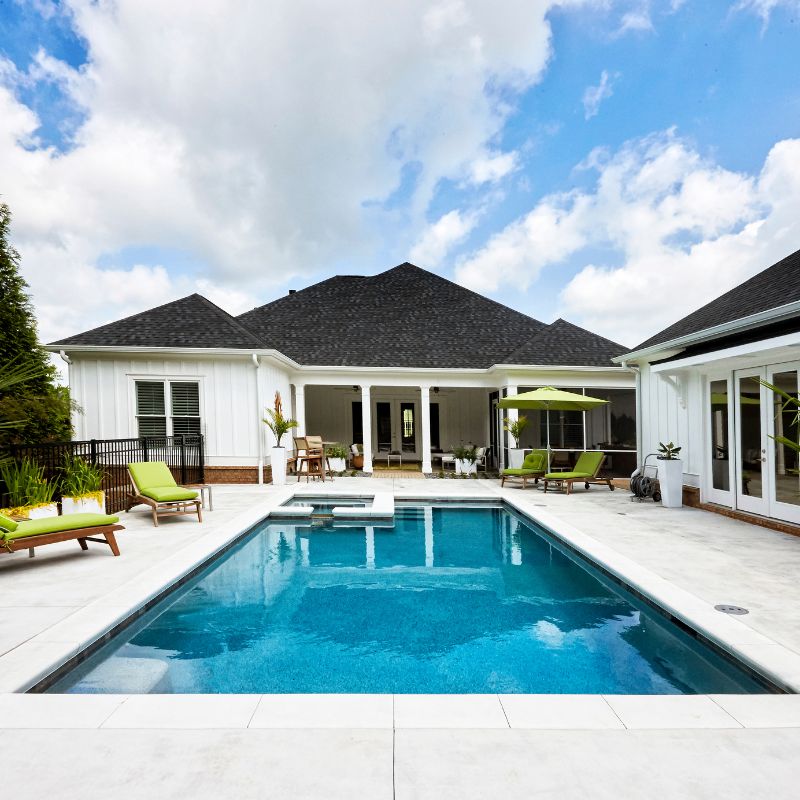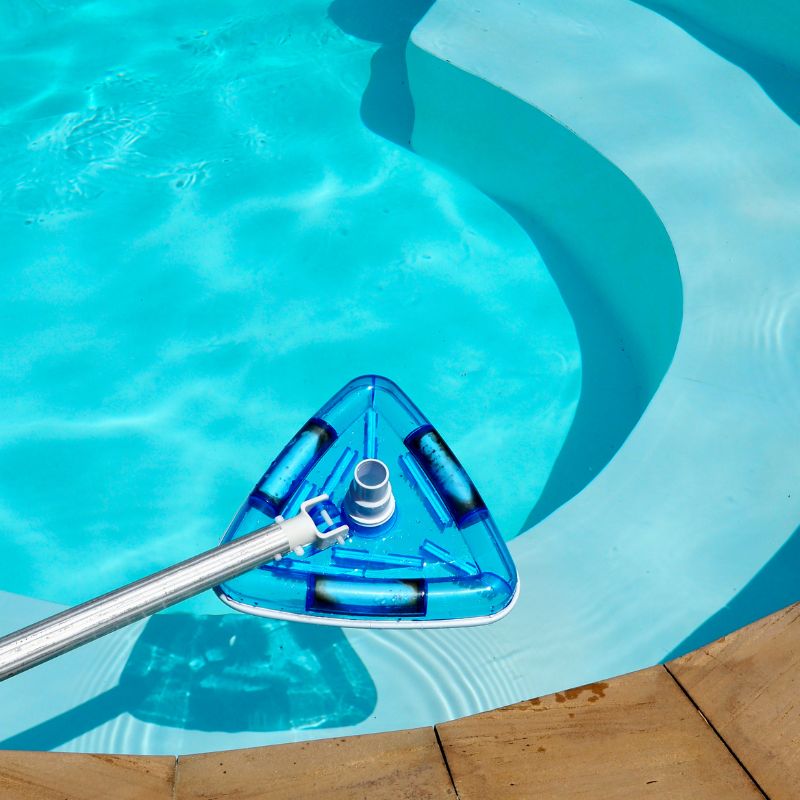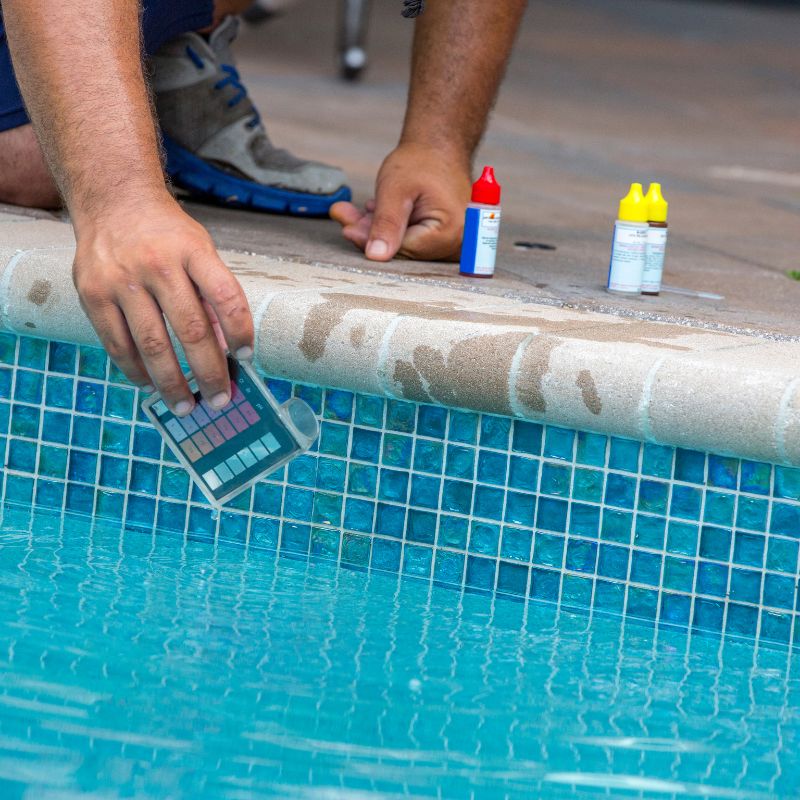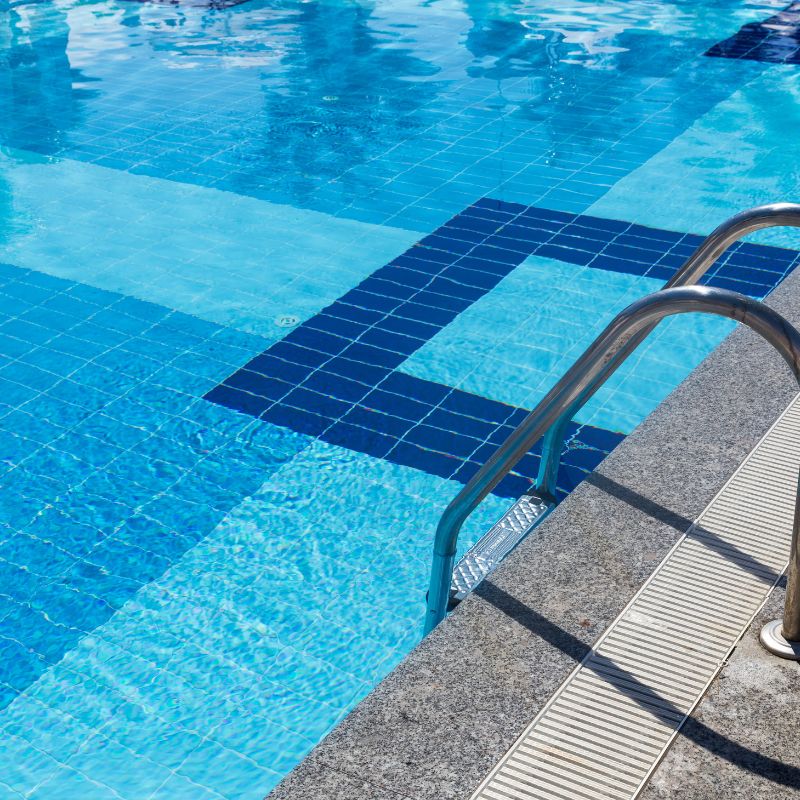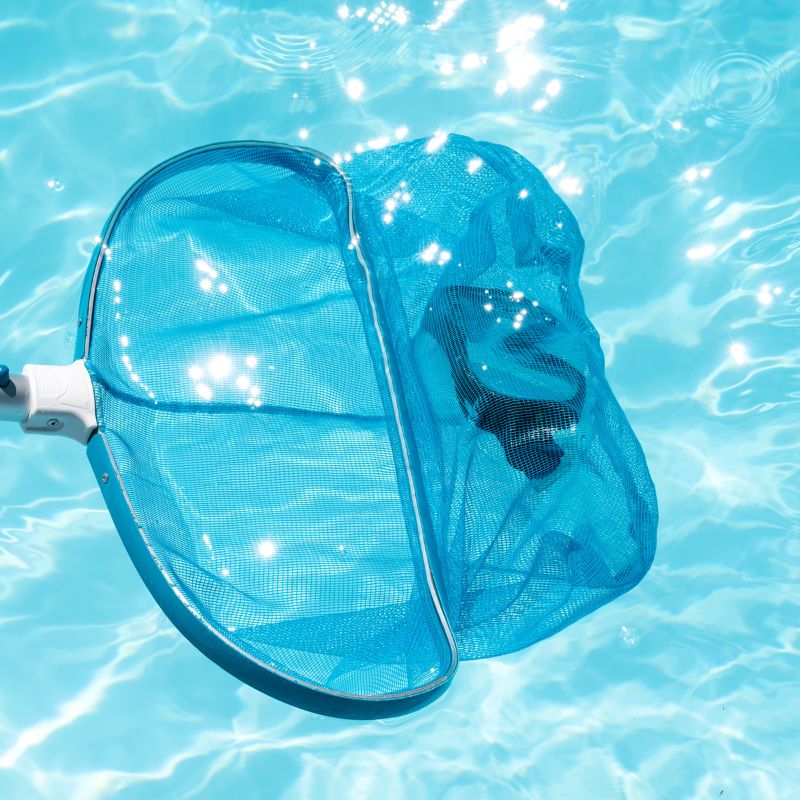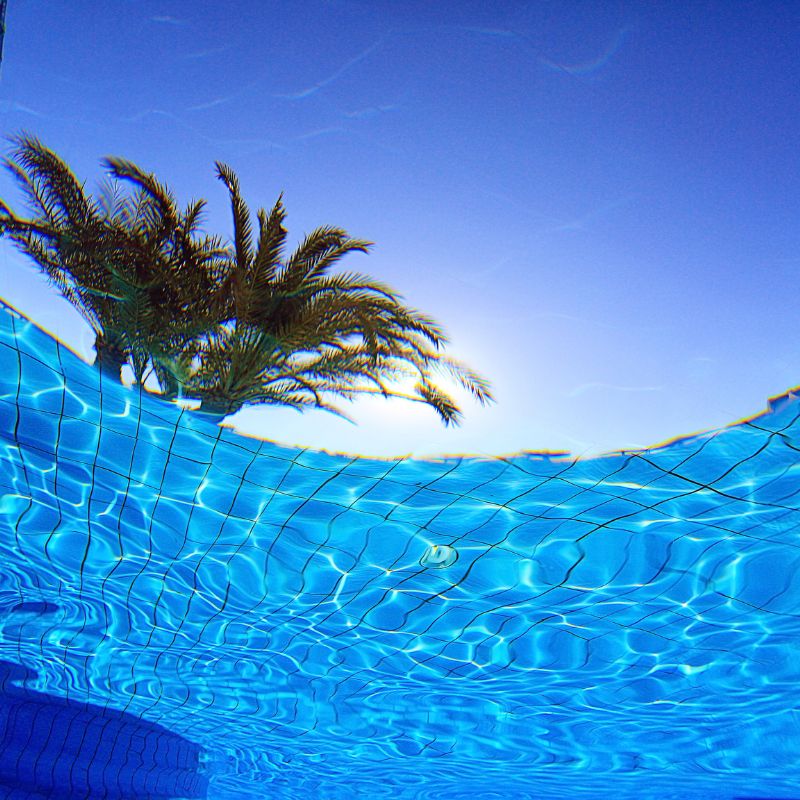Is your pool water looking a little… off? Cloudy, maybe? Before you drain your wallet on expensive chemicals, consider this: a dirty pool filter is often the culprit. It’s like trying to breathe through a clogged straw – your pool can’t “exhale” the debris, leading to bigger problems.
Cleaning your pool filter is easier than you think. This guide breaks it down. We will review EVERYTHING you need.
- Types of pool filters (sand, cartridge, DE)
- Step-by-step cleaning instructions for each type.
- Troubleshooting common filter problems.
- How often you REALLY need to clean your filter.
- Tips to extend your filter’s lifespan (and save money!).
Want to skip the hassle? We get it. Our team at Transparent Pool Service LLC handles all the dirty work, so you can get back to enjoying your crystal-clear pool. We have over 15 years of experience.
Types of Pool Filters to Be Cleaned
Before you grab a wrench, you need to know what you’re working with. There are three main types of pool filters: sand, cartridge, and DE (diatomaceous earth). Each has its pros and cons. Let’s explore them to see which one is best for your needs.
Sand Filters: The Old Reliable
Sand filters are the workhorses of the pool world. They’re simple, affordable, and relatively low-maintenance. Think of them as a giant sandbox for your pool water.
- How they work: Dirty water is pumped into the tank, where it filters through a bed of special pool filter sand. The sand traps dirt and debris. Clean water returns to the pool.
- Pros: Low initial cost, easy to operate, and readily available parts.
- Cons: Least effective at filtering tiny particles (20-40 microns). Backwashing (cleaning) wastes water. Sand needs replacing every 5-7 years.
- Best for: Budget-conscious pool owners, above-ground pools, and those who prefer simplicity.
Cartridge Pool Filters: The Middle Ground
Pool cartridge filter offers a good balance between filtration power and ease of use. They resemble the air filter in your car, but on a much larger scale.
- How they work: Water passes through a pleated fabric filter cartridge. This cartridge traps dirt and debris.
- Pros: More effective than sand filters at capturing smaller particles (10-15 microns). No backwashing required, saving water.
- Cons: Cartridges need rinsing more often than sand filters need backwashing. Replacement cartridges can be costly over time.
- Best for: Most in-ground pools, smaller pools, and those concerned about water conservation.
DE Filters: The Filtration Powerhouse
DE filters are the gold standard for water clarity. They provide the finest filtration, removing particles down to an impressive 3-5 microns.
- How they work: Water passes through grids coated with diatomaceous earth (DE) powder. DE is the fossilized remains of tiny aquatic organisms. Think microscopic sponges.
- Pros: Superior filtration, resulting in the clearest water.
- Cons: Most expensive filter type. Requires more maintenance, including adding DE powder after each backwash. Some local regulations restrict DE disposal.
- Best for: Large pools, pools in areas with a lot of fine debris (like dust or pollen), and those who demand the absolute cleanest water.
Don’t know which type of filter you have? Check the manufacturer’s label on the filter tank. It should clearly state the model and type.
Step-by-Step Cleaning Instructions
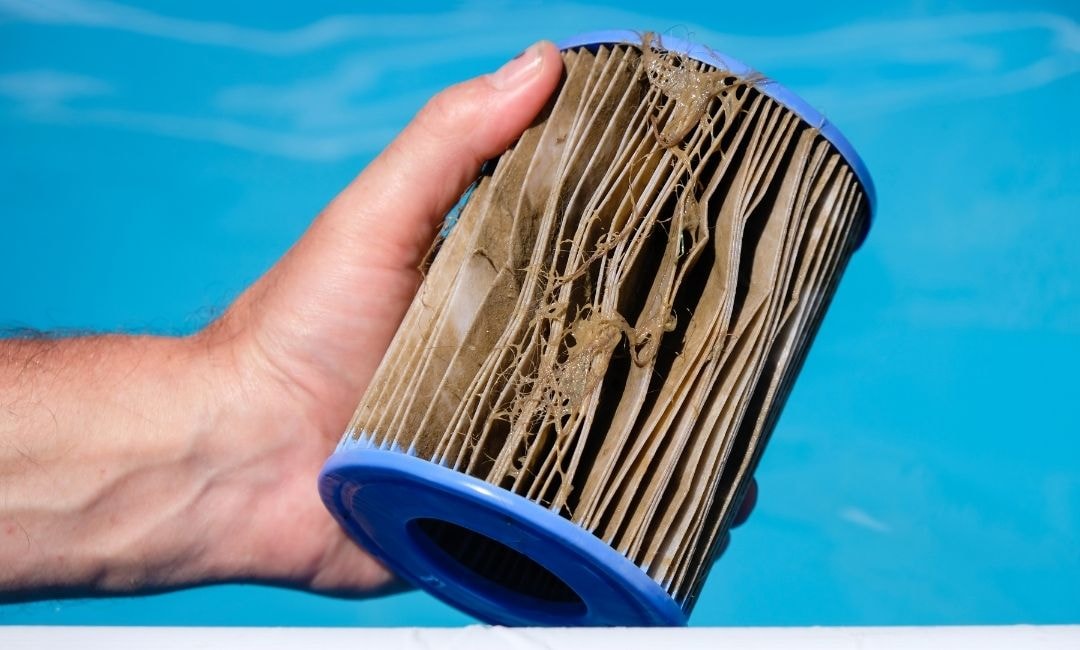
Follow these steps carefully for the best results.
Cleaning a Sand Filter (Backwashing)
Backwashing a sand filter is like giving it a good shower. It reverses the water flow to flush out trapped dirt.
- Turn OFF the pump: Never backwash with the pump running.
- Attach the backwash hose: Connect the hose to the backwash port on your multiport valve.
- Set the multiport valve to “Backwash”: Rotate the handle to the “Backwash” setting.
- Turn ON the pump: Run the pump until the water in the sight glass (a small, clear section on the valve) runs clear. This usually takes 2-3 minutes.
- Turn OFF the pump: Important!
- Set the multiport valve to “Rinse”: This helps settle the sand bed.
- Turn ON the pump: Run for about 30 seconds.
- Turn OFF the pump:
- Set the multiport valve back to “Filter”: You’re done!
Keep an eye on your pool’s pressure gauge. When the pressure rises 8-10 PSI above the clean, starting pressure, it’s time to backwash.
Cleaning a Cartridge Filter
Cleaning a cartridge filter is more hands-on, but still straightforward.
- Turn OFF the pump: Safety first!
- Release the air relief valve: This is usually located on top of the filter tank.
- Remove the filter tank lid: This may involve unscrewing clamps or a locking ring.
- Carefully remove the cartridge(s): Some filters have multiple cartridges.
- Rinse the cartridge(s) with a garden hose: Use a nozzle with good pressure, but not a pressure washer (too powerful!). Rinse from top to bottom, getting between the pleats.
- Inspect the cartridge(s): Look for tears, damage, or excessive buildup. Replace if necessary.
- Reassemble the filter: Put the cartridge(s) back in, secure the lid, and close the air relief valve.
- Turn the Pump ON: Open the air relief value to release any trapped air.
Soak heavily soiled cartridges in a filter cleaning solution overnight before rinsing. You can find these solutions at most pool supply stores. Or reach out to us, Transparent Pool Service.
Cleaning a DE Filter
Cleaning a DE filter is a combination of backwashing and manual cleaning.
- Backwash the filter (see steps for sand filters): This removes most of the dirty DE.
- Turn OFF the pump:
- Release the air relief valve:
- Remove the filter tank lid:
- Carefully remove the filter grids: These are usually assembled in a manifold.
- Rinse the grids with a garden hose: Remove all old DE and debris.
- Inspect the grids: Check for tears or damage.
- Reassemble the filter:
- Turn ON the pump:
- Add DE powder: Add the correct amount of DE powder (check your filter’s manual) through the pool skimmer. The DE will coat the grids.
Always wear a dust mask and eye protection when handling DE powder or even automatic dishwasher detergent powder. It’s a fine powder that can irritate your lungs and eyes.
| Filter Type | Cleaning Frequency | Replacement Schedule |
|---|---|---|
| Sand | Backwash every 2-4 weeks | Sand every 5-7 years |
| Cartridge | Rinse every 4-6 weeks | Cartridge every 1-2 years |
| DE | Backwash every 4-6 weeks | Grids every 2-3 years |
Troubleshooting Common Filter Problems
Even with perfect maintenance, filter problems can pop up. Here’s how to tackle some common issues:
Problem: Low Water Flow
- Possible Causes:
- Clogged filter (most common!)
- Closed valves
- Pump problems (impeller clogged, motor issues)
- Air leaks in the plumbing
- Clogged skimmer or main drain
- Solutions:
- Clean the filter (backwash or rinse).
- Check that all valves are fully open.
- Inspect the pump impeller for debris.
- Check for air leaks (look for bubbles in the return jets).
Problem: Cloudy Water Despite a Clean Filter
- Possible Causes:
- Water chemistry imbalance (pH, alkalinity, sanitizer levels)
- Very fine particles that the filter can’t catch (especially with sand filters)
- Algae growth
- Pump running for too short of a time
- Solutions:
- Test and balance your water chemistry.
- Consider using a pool clarifier or flocculant (for sand filters).
- Shock the pool (if algae is present).
- Increase the pump run time.
Problem: Filter Pressure Too High (Even After Cleaning)
- Possible Causes:
- Faulty pressure gauge
- Closed or partially closed valves
- Clogged return lines
- Filter is too small for the pool
- DE Filters: Too Much DE
- Solutions:
- Replace the pressure gauge (they’re inexpensive).
- Check all valves.
- Inspect return lines for obstructions.
- Consider upgrading to a larger filter.
- DE Filters: backwash and add the correct DE amount
Problem: Sand/DE Returning to the Pool
- Sand Filter:
- Broken lateral (inside the filter tank)
- Multiport valve problem
- DE Filter:
- Torn grid
- Cracked manifold
- Multiport valve problem
- Not enough DE
- Solutions:
- Inspect and replace damaged parts (this often requires professional help).
Problem: Short Filter Cycles (Cleaning Too Often)
- Possible causes: All of the above. This is a symptom that something is wrong, requiring investigation.
Pro Tip: Don’t ignore filter problems! Small issues can quickly become big, expensive repairs.
How Often You REALLY Need to Clean Your Filter

The standard answer is “it depends.” Annoying, right? But it’s true! While the guidelines above (every 2-4 weeks for sand/DE backwashing, 4-6 weeks for cartridge rinsing) are a good starting point, several factors influence the ideal frequency.
Factors Affecting Cleaning Frequency:
- Pool Usage: More swimmers = more debris = more frequent cleaning. A pool party every weekend? You’ll be cleaning more often.
- Environment: Lots of trees, dust, or pollen? Expect to clean your filter more frequently. Living in a windy area like Lehigh Acres, FL, means you’ll likely deal with more airborne particles. Hint, hint… that’s where Transparent Pool Service LLC comes in!
- Pool Size: A larger pool has more water to filter, which can sometimes mean less frequent cleaning (but larger filters).
- Filter Size: An undersized filter will need cleaning much more often. It’s like trying to clean a mansion with a tiny vacuum.
- Water Chemistry: Improperly balanced water can lead to algae growth and other issues that clog your filter faster.
- Weather Events: Did a big storm just roll through? Clean that filter!
The Pressure Gauge is Your Friend
The best way to know when to clean your filter (regardless of type) is to monitor the pressure gauge.
- Find your baseline: When your filter is clean, note the pressure reading. This is your “clean” or “starting” pressure.
- Watch for the rise: As the filter gets dirty, the pressure will increase.
- Clean at 8-10 PSI above baseline: This is the general rule of thumb. Some manufacturers may recommend a slightly different range, so check your filter’s manual.
Don’t wait until your pool water is cloudy to clean the filter. By then, the problem is already affecting your water quality. Preventative maintenance is key.
Beyond the Basics: Deep Cleaning
Even with regular cleaning, your filter may need a deeper clean periodically. This is especially true for cartridge and DE filters.
- Cartridge Filters: Consider a chemical soak at least once a season (or more if needed). This helps remove oils and buildup that rinsing alone can’t tackle.
- DE Filters: Disassemble and thoroughly clean the grids at least once a year. This ensures optimal performance.
Tips to Extend Your Filter’s Lifespan (and Save Money!)
A well-maintained filter is a happy filter – and a happy filter means a happy pool owner (and a healthier wallet!). Here’s how to keep your filter running smoothly for years to come:
- Regular Cleaning: This is the single most important thing you can do. Follow the recommended cleaning schedule and monitor your pressure gauge.
- Proper Water Chemistry: Balanced water is crucial for everything in your pool, including the filter. Imbalances can lead to scaling, corrosion, and algae growth, all of which shorten filter life.
- Don’t Skimp on Chemicals (But Don’t Overdo It Either): Use quality pool chemicals and follow the instructions carefully. Too much of certain chemicals can damage filter components.
- Run the Pump Long Enough: Your pump needs to circulate all the pool water through the filter at least once a day (this is called a “turnover”). Typically, 8-12 hours is sufficient, but it depends on your pool size and pump.
- Skim Regularly: The less debris that enters your filter, the better. Skim leaves, bugs, and other debris from the surface frequently.
- Clean the Skimmer and Pump Baskets: These are your first line of defense. Empty them regularly to prevent clogs and maintain good water flow.
- Inspect for Leaks: Check the filter tank, valves, and plumbing for leaks. Even small leaks can waste water and put extra strain on the system.
- Protect from the Elements: If possible, provide some shade for your filter. Direct sunlight can degrade plastic components over time.
- Winterize Properly (If Applicable): It doesn’t get too cold here in Florida.
- Consider a Filter Upgrade (When the Time is Right): If your filter is old, undersized, or constantly giving you problems, it might be time for an upgrade. A more efficient filter can save you money on energy and chemicals in the long run.
Think of your pool filter like the oil filter in your car. You wouldn’t drive for years without changing the oil, right? Regular filter maintenance is just as important for your pool.
And, of course, if all this sounds like too much work, remember that Transparent Pool Service LLC is here to help! We offer comprehensive pool cleaning and maintenance services in Lehigh Acres, Alva, North Fort Myers, Babcock Ranch, and surrounding areas.
Sparkling Clean Pool, Thanks to Transparent Pool Service LLC!
Cleaning your pool filter isn’t rocket science, but it is essential maintenance. Instead of heading straight to the pool store for expensive chemicals, simple solutions like a good hose attachment can often do the trick.
For tougher jobs, knowing how to safely dilute acid for an acid wash (or using a TSP substitute or even mild dishwashing detergent for cartridge filters) can save you money and keep your pool sparkling. These steps will keep the water crystal clear.
Remember these key takeaways:
- Know your filter type (sand, cartridge, or DE).
- Clean regularly based on pressure, not just the calendar.
- Troubleshoot problems promptly.
- Proper water chemistry is key.
Don’t want to get your hands dirty? Or do you want an expert pool cleaning to assess the health of your pool filter? Transparent Pool Service LLC has you covered! With 15+ years in Lehigh Acres, we have the expertise to handle ALL your pool cleaning and maintenance needs. Contact us Today!

